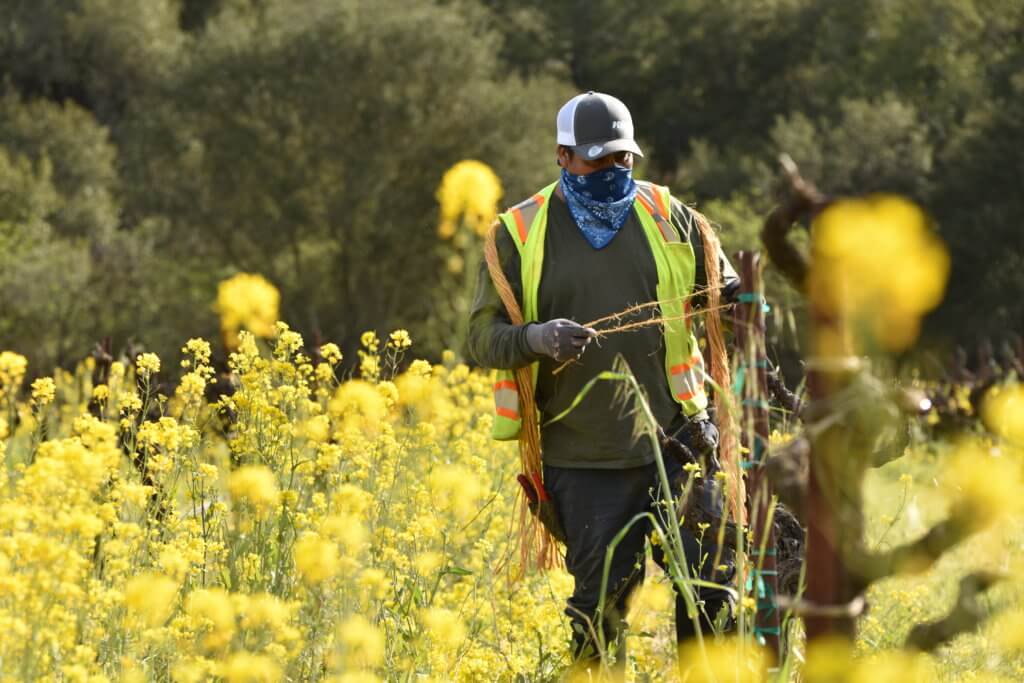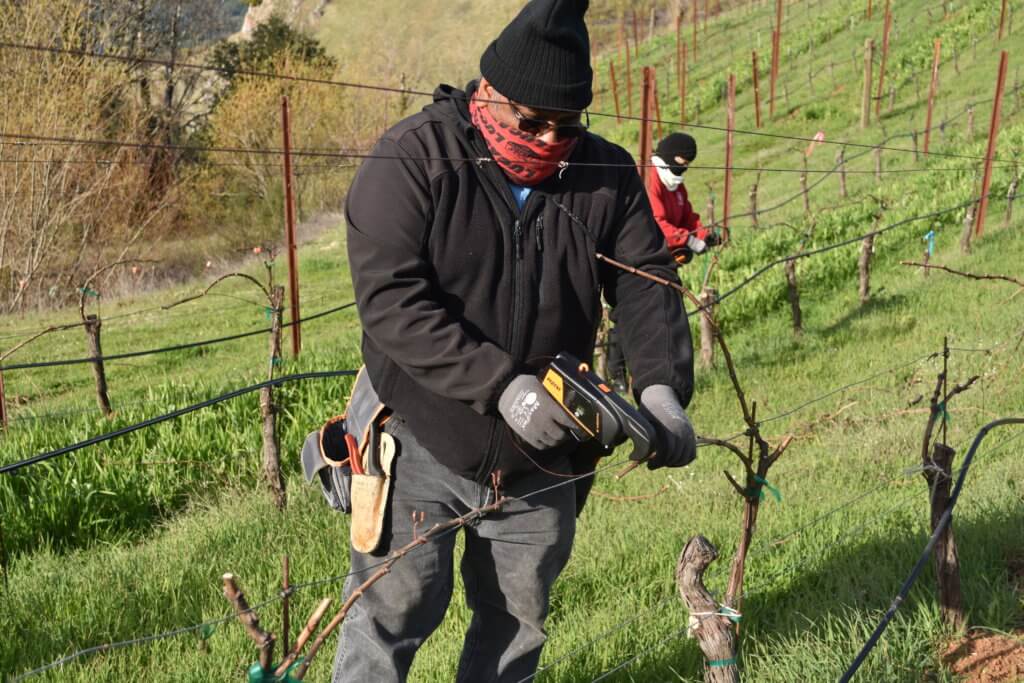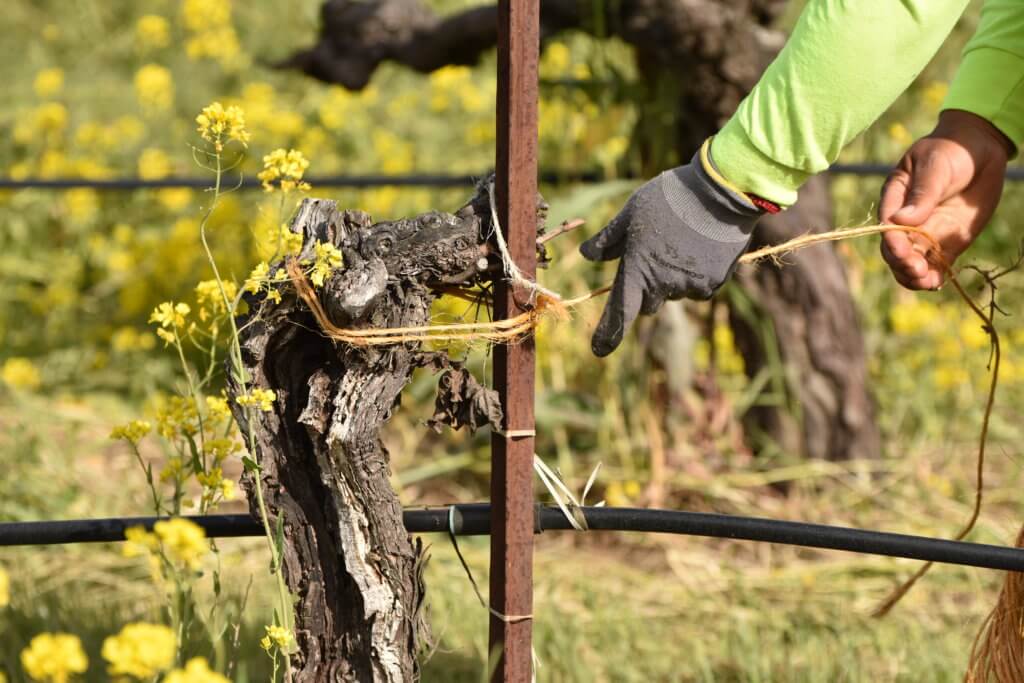Grapevine Tying Methods for Vineyard Support
Blog Post
The vineyard season starts with the pruning and tying of vines, an important process that sets up our vineyard teams for success later in the season. After the vines are first pruned, our tying crews then step in to tie young and old vines alike – but this method can often look very different depending on the vineyard. Kyle Theriot, Director of Vineyard Operations at Monte Bello, and Mauro Maldonado, Viticulturist at Lytton Springs, give an inside look at their respective team’s tying operations.
Why is Grapevine Tying Important?
Tying grapevines after cane pruning is vital for the future success of the crop. After cane pruning, canes will often point upwards in a slanted direction, which means only the buds near the top would develop well. Tying of the canes is also key for producing the following year’s growth via a renewal spur, according to Theriot:
“Everything at Monte Bello is predominantly cane pruned, which is a pruning system where we leave a single cane of one-year-old wood and a what we call renewal spur with two buds. We tie down that cane onto the underwire and that’ll provide this year’s growth and the renewal spur provides the next year’s cane to lay down.” – Kyle Theriot
Support is another core reason for tying our vines. Support, even in older and established vines, is often needed to help keep canes and shoots off the ground. Additionally, strategic tying of the vine enables more of the vine to have contact with air and sun, producing a greater overall fruit yield.
The methods of tying typically differ depending on the age and size of the vines, as shown in the sections below.
Tying Vines at Monte Bello
At Monte Bello, all vines are pruned and left with two canes sticking up that then need to be laid down and tied. “The tying crew will start usually about a month after we start pruning just to give us all a bit of a buffer so they don’t run into the pruning crew because typically the tying goes faster than the pruning,” said Theriot.
The vineyard’s pruning operations kick off at Monte Bello around January, and the tying crew follows later with tying guns. According to Theriot, “we just hook it on the cane, click the button, and pull off. It goes pretty quick.”
The groundwork done by the vineyard team in these winter months is key to setting the vineyard up for success. “Once the pruning and tying are done, we’re pretty much ready for the beginning of the season and for bud break,” said Theriot.
Tying Operations at Lytton Springs
Pruning and tying operations typically begin earlier at Lytton Springs, where the climate dictates an earlier vineyard schedule than at Monte Bello. Much of the tying is done in these vineyards with bull rope to support the older vines.
“Here it’s more of a head train, so it’s more permanent, and so we use the bull rope. It’ll last longer, but throughout the years it will kind of break down on its own, and then we can just re-tie as needed,” said Maldonado.
Trellis Methods for Tying Vines
While there are many different techniques for tying used by vineyards across the world, there are essentially two key types of trellises: a vertical trellis or a horizontal trellis.
A vertical trellis uses two wires, with the lower one allowing for air circulation under the vines and a second wire three feet above the first.
A horizontal trellis makes use of three wires. The first wire, used for trunk support, is attached to the post. Two more wires, parallel to each other, are attached horizontally to the cross arms holding the posts.
These trellis systems then provide the framework for tying the grapevines.
Related Links
Looking for more vineyard related resources? Try our other posts:
Wait!
In order to qualify for user related discounts, you must log in before proceeding with checkout. Click the button below to log in and receive these benefits, or close the window to continue.
Log In

